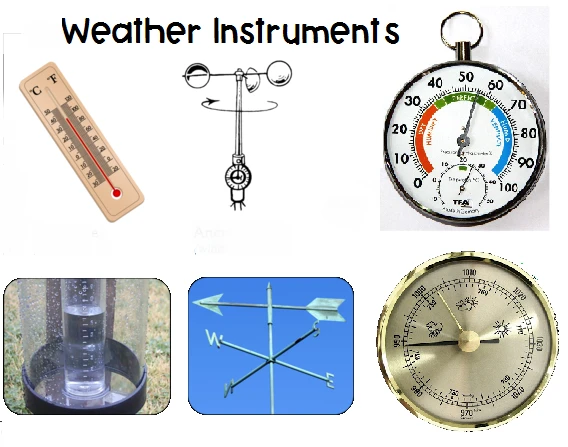
# Weather Instruments: Essential Tools for Meteorologists
Introduction to Weather Instruments
Weather instruments are specialized tools designed to measure various atmospheric conditions. Meteorologists rely on these instruments to collect accurate data about temperature, humidity, wind speed, precipitation, and other weather elements. These measurements form the foundation of weather forecasting and climate studies.
Common Types of Weather Instruments
Thermometers
Thermometers are perhaps the most recognizable weather instruments. They measure air temperature using various methods, including liquid expansion (mercury or alcohol thermometers) or electronic sensors (digital thermometers). Modern weather stations often use electronic thermometers for their accuracy and quick response time.
Barometers
Barometers measure atmospheric pressure, which is crucial for predicting weather changes. Mercury barometers were traditionally used, but aneroid barometers (using a sealed metal chamber) and digital barometers are more common today. Changes in atmospheric pressure often indicate approaching weather systems.
Anemometers
These instruments measure wind speed and sometimes wind direction. Cup anemometers with three or four rotating cups are widely used, while vane anemometers can measure both speed and direction. Ultrasonic anemometers provide highly accurate measurements without moving parts.
Hygrometers
Hygrometers measure humidity – the amount of water vapor in the air. Psychrometers (wet-and-dry bulb thermometers) were traditional instruments, while modern electronic hygrometers use capacitive or resistive sensors for more precise measurements.
Rain Gauges
Rain gauges collect and measure precipitation. Simple cylindrical gauges measure total rainfall, while tipping bucket rain gauges can record rainfall intensity over time. Some advanced models can distinguish between rain, snow, and hail.
Advanced Weather Instruments
Weather Radars
Weather radars detect precipitation, its motion, and intensity by sending out radio waves and analyzing the returned signals. Doppler radar can also measure wind speed and direction within storms, making it invaluable for severe weather warnings.
Weather Satellites
Geostationary and polar-orbiting satellites provide comprehensive views of weather systems from space. They monitor cloud patterns, storm development, sea surface temperatures, and other global weather phenomena.
Radiosondes
These instrument packages are carried aloft by weather balloons to measure atmospheric conditions at various altitudes. They typically include sensors for temperature, humidity, pressure, and sometimes wind speed and direction.
The Importance of Weather Instruments
Accurate weather instruments are essential for:
- Short-term weather forecasting
- Severe weather warnings
- Climate monitoring and research
- Aviation and marine safety
- Agricultural planning
- Energy production and distribution
As technology advances, weather instruments continue to become more precise, reliable, and capable of measuring increasingly complex atmospheric phenomena. The data they provide helps us better understand our planet’s weather systems and improve our ability to predict future conditions.
Keyword: wether instruments